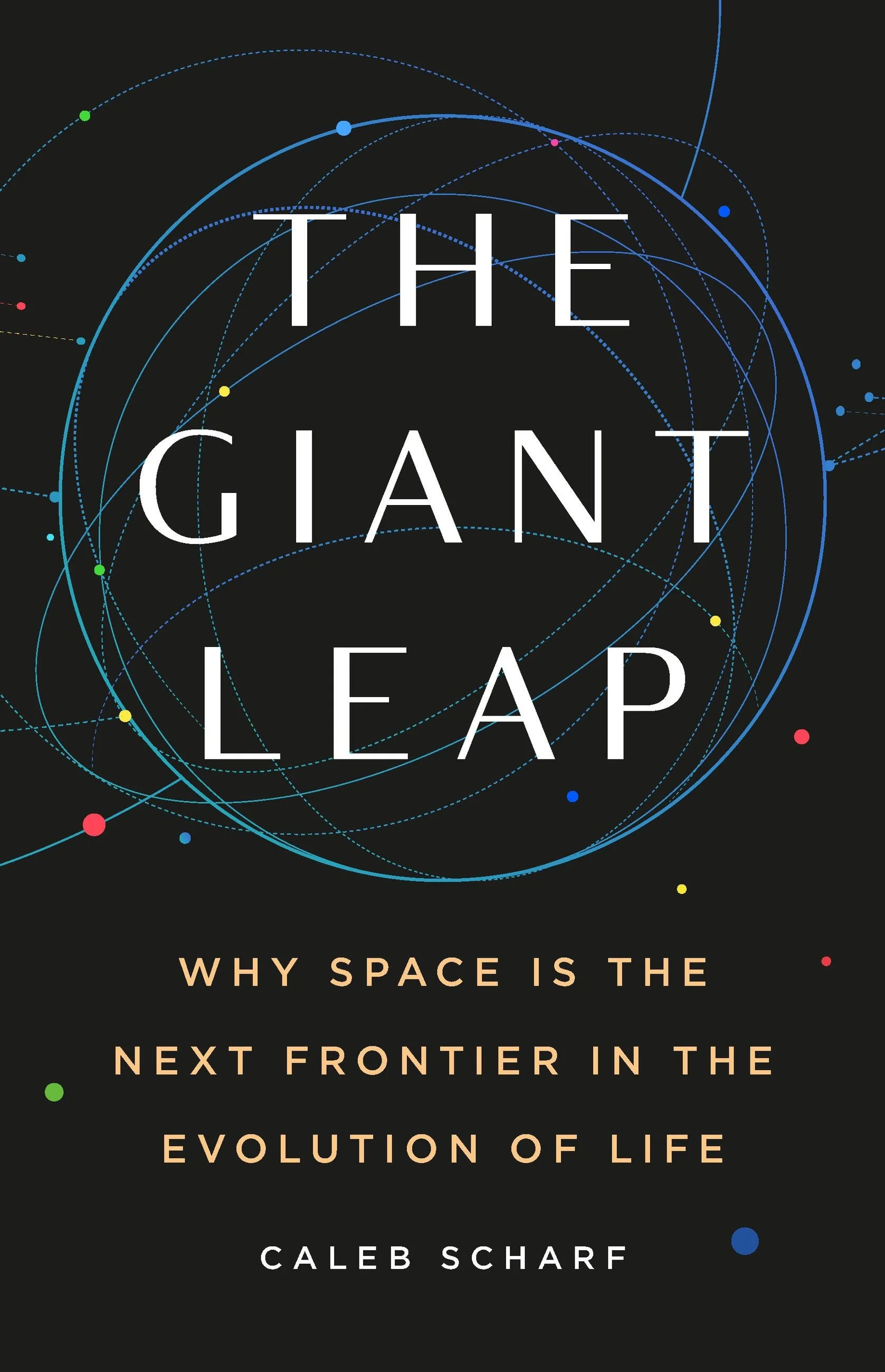The Giant Leap: Why Space Is the Next Frontier in the Evolution of Life
/Available Now
A leading astrobiologist “demonstrates how becoming a true space-faring species is more than just humanity’s future” (Adam Frank, author of The Little Book of Aliens)—it is an evolutionary event at least as important as life’s first journey from sea to land
The story of life has always been one of great transitions, of crossing new frontiers. The dawn of life itself is one; so, too, is the first time two cells stuck together rather than drifting apart. And perhaps most dramatic were the moves from the sea to land, land to air. Each transition has witnessed wild storms of innovation, opportunity, and hazard. It might seem that there are no more realms for life to venture. But there is one: space.
In The Giant Leap, astrobiologist Caleb Scharf argues that our journey into space isn’t simply a giant leap for humankind—it’s life’s next great transition, an evolution of evolution itself. Humans and our technology are catalysts for an interplanetary transformation, marking a disruption in the story of life as fundamental as life’s movement from sea to land, and land to sky.
Inspired by Darwin’s account of his journey on the Beagle, and packed with stories from the past, present, and future of space travel, The Giant Leap thrills at both life’s creativity and the marvels of technology that have propelled us into the cosmos. And it offers an awesome glimpse of the grander vistas that wait in the great beyond.
PRAISE
"The Giant Leap is a detailed and provocative exploration of what it means for life as we know it to escape the bounds of the only planet where it has ever been. We have taken the first tentative steps, and this book will inspire people to think more seriously about what the next ones can and should be."
- Sean Carroll, author of The Biggest Ideas in the Universe
“If we can make it through the many crises of the next century, then the Solar System and the stars beyond await us. In The Giant Leap, Caleb Scharf demonstrates how becoming a true space-faring species is more than just humanity’s future. It’s something even greater, an essential transition for life itself. In the engaging, beautifully written, and closely argued The Giant Leap, Scharf shows us how the 3.5-billion-year evolution of life on Earth has led to this moment as the biosphere itself stands at the precipice. The Giant Leap is a must read for anyone interested in life in the universe, space travel, and the human future."
Adam Frank, author of The Little Book of Aliens
“When Caleb Scharf was 15 months old, on July 20, 1969, a human being stepped on another world for the first time, as significant a moment in the history of life as the day 370 million years ago when the first fish emerged from the sea onto dry land. Scharf, now a renowned astrobiologist, is convinced that the landing of Apollo 11 on the moon was a mere stepping stone in life’s transition from a planetary to a cosmic phenomenon. In this wide-ranging, exhilarating and engagingly written book, he makes his case brilliantly.”
— Marcus Chown, author of A Crack in Everything
"This fascinating book presents a panorama of the Solar System, describing what’s already been discovered and speculating about the ‘greening’ of our cosmic habitat--planets, moons, and asteroids. It’s enlivened by Darwinian cameos, offering new insight even to those familiar with the subject–but keeps a welcome focus on explorations feasible in the human era, steering clear of flakey science-fictional territory"
Martin Rees, author of The End of Astronauts
"A wonderfully told, detailed account of where we have been, where we are, and where we are heading in the exploration of space. The Giant Leap keeps the reader engaged with explanations of the scientific breakthroughs and personal motivations that will continue to take us on humankind's greatest adventures in space."
Mike Massimino, former NASA astronaut
“A deeply researched, expertly written account of the fascinating interplay between evolution and exploration.”
Kirkus
“Caleb Scharf eloquently explains how difficult spaceflight is but also why it is so important to the future of humanity. Expanding into the solar system will not be easy, but he shows how it will be essential, and perhaps inevitable.”
— Jeff Foust, author at SpaceNews










